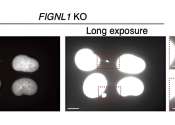Last update:
Biology news

Researchers target spermidine production to combat emerging drug resistance in Salmonella
Food-borne diseases like typhoid, caused by Salmonella Typhimurium, are a severe threat to public health, especially in India. The indiscriminate use of antibiotics has allowed this bacterium to become resistant, posing a ...
Cell & Microbiology
2 hours ago
0
0

Global warming may boost mosquito habitats, study finds
A research team at Los Alamos National Laboratory is using computer models to simulate how climate change could expand the geographical range in which mosquitoes live, which may cause an increase in mosquito-borne illness. ...
Plants & Animals
2 hours ago
0
7
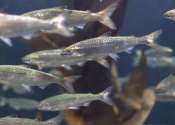
Genetic study finds early summer fishing can have an evolutionary impact, resulting in smaller salmon
Atlantic salmon are caught by fisheries when the fish are migrating to spawn. A new study led by the University of Helsinki explored how salmon caught at different times during their spawning migration differ from each other ...
Evolution
4 hours ago
0
43
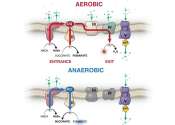
Researchers discovery family of natural compounds that selectively kill parasites
An international team led by researchers at the University of Toronto has found a family of natural compounds with potential as new and more effective treatments for parasitic worms. The compounds stall the unique metabolic ...
Cell & Microbiology
4 hours ago
0
6

MATE transporter facilitates bitter saponin transport from cytoplasm to vacuole
Domestic soybeans serve as an important source of healthy edible plant oil and high-quality plant protein in our food culture. In addition to the well-known components of oil (approximately 20%), protein (approximately 40%), ...
Molecular & Computational biology
2 hours ago
0
0

Scientists find ancient, endangered lamprey fish in Queensland, 1400 km north of its previous known range
The Australian brook lamprey (Mordacia praecox) is part of a group of primitive jawless fish. It's up to 15 cm long, with rows of sharp teeth. Surprisingly, it doesn't use these teeth to suck blood like most lamprey species—it's ...
Plants & Animals
2 hours ago
0
1
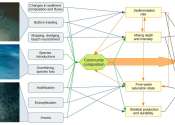
Human activity is making it harder for scientists to interpret oceans' past
New research shows human activity is significantly altering the ways in which marine organisms are preserved, with lasting effects that can both improve and impair the fossil record. The findings are published in the journal ...
Ecology
5 hours ago
0
53

Dogs brought to US must be microchipped, older than 6 months: CDC
Dogs brought into the United States from abroad must be compliant with new rules to help fight rabies in this country, according to updated guidance from the Centers for Disease Control and Prevention issued Wednesday.
Veterinary medicine
1 hour ago
0
0
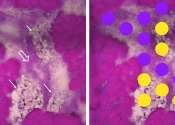
Researchers map out anatomy of wooden breast syndrome in broiler chickens
Each year, Delaware farms raise more than 240 million broiler chickens, the top agricultural commodity in the state with a $3.5 billion impact on the state's economy.
Molecular & Computational biology
7 hours ago
0
45

An adjuvant made in yeast could lower vaccine cost and boost availability
Vaccines save lives, as proven during the recent pandemic, but one component of most vaccines—including the Novavax COVID-19 vaccine—goes unheralded: a molecule or other compound that primes the immune system to mount ...
Cell & Microbiology
7 hours ago
0
1

Marine bacteria team up to produce a vital vitamin
A German-American research team led by microbiologist Dr. Gerrit Wienhausen from the University of Oldenburg (Germany) has come an important step closer to a better understanding of highly complex interactions between marine ...
Cell & Microbiology
7 hours ago
0
36

Woodlice hold the new record for smallest dispersers of ingested seeds
Even bugs as small as woodlice can disperse seeds they eat, setting a new record for smallest animal recorded to do so. The Kobe University discovery underscores the crucial yet often overlooked role that small invertebrates ...
Plants & Animals
7 hours ago
0
5
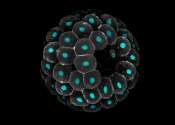
Study pinpoints cellular response to pressure in sea star embryos
An international team of scientists has discovered a new cellular mechanism that explains how cells can adapt to pressure changes during tissue growth by packing themselves into a unique shape.
Cell & Microbiology
8 hours ago
0
1

Discovery of ancient Glaswegian shrimp fossil reveals new species
A short but robust little shrimp may have died out over 330 million years ago during the Carboniferous period, but the rare Scottish shellfish has been revitalized as a new species to science and as a Glaswegian.
Plants & Animals
8 hours ago
0
5
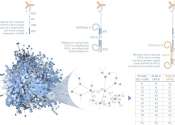
New technology changes how proteins in individual cells are studied
Researchers from Karolinska Institutet, together with Pixelgen Technologies, have developed and applied a technique that makes it possible to map proteins in individual cells in a completely new way. Not only is it now possible ...
Biotechnology
8 hours ago
0
25

Big data helps determine what drives disease risk
Working with nearly 3,000 observations across almost 1,500 host-parasite combinations, researchers at Notre Dame University have found that biodiversity loss, chemical pollution, introduced species, and climate change, but ...
Ecology
5 hours ago
0
1

Researchers discover new function of oncoproteins
Researchers at the University of Würzburg have discovered a new function of the oncoprotein MYCN: It not only helps cancer cells to grow stronger, but also makes them more resistant to drugs. The study is published in Molecular ...
Molecular & Computational biology
9 hours ago
0
0

Limited adaptability is making freshwater bacteria vulnerable to climate change
Freshwater bacteria with small genomes frequently undergo prolonged periods of adaptive stagnation. Based on genomic analyses of samples from Lake Zurich and other European lakes, researchers at the University of Zurich have ...
Evolution
9 hours ago
0
5

Model predicts future spread of box tree moth in North America
CABI scientists have led research with collaborations from the University of Toronto and University of Guelph, both in Canada, to update a model which predicts the future spread of the box tree moth (Cydalima perspectalis) ...
Plants & Animals
9 hours ago
1
0

Researchers conduct survey on attitudes toward urban animals and where people want them to live
How do city residents feel about animals in their immediate surroundings? A recent study published in the Journal of Urban Ecology by the Technical University of Munich (TUM), the University of Jena and the Vienna University ...
Ecology
5 hours ago
0
1
More news

US restorationist solves 60-million-year-old dinosaur fossil 'puzzles'

Exploring lysosomal biology: Current approaches and methods

Study underscores new strategies to fight drug-resistant bacteria

Chimps shown to learn and improve tool-using skills even as adults

How a 'conductor' makes sense of chaos in early mouse embryos

Decoding development: mRNA's role in embryo formation

Study sheds light on cancer cell 'tug-of-war'

Free-forming organelles help plants adapt to climate change
Other news

Study sheds light on the origin of elasticity in glasses and gels

Quantum simulators solve physics puzzles with colored dots

The interference of many atoms, and a new approach to boson sampling

Physicists reach atomic-scale telegraphy with light

Microbiome studies help explore treatments for genetic disorders

Fruit fly model identifies key regulators behind organ development

Dogma-challenging telomere findings may offer new insights for cancer treatments

Why parrots sometimes adopt—or kill—each other's babies

Rich molecular language guides tiny liquid droplet formation in cells

Bsal and beyond: Task force helps stave off amphibian disease threat

Snap bean panel reveals variability in leaf, pod color phenotypes

Aquatic weed among 'world's worst' expands in northeastern US

Catalyst search shows how computing can take the guesswork out of chemistry

How rising treelines can affect Alpine lakes












































